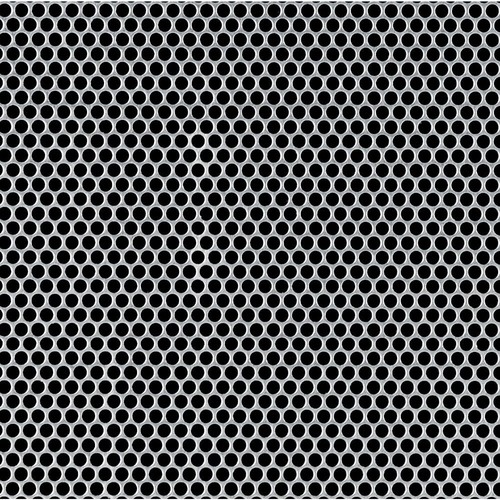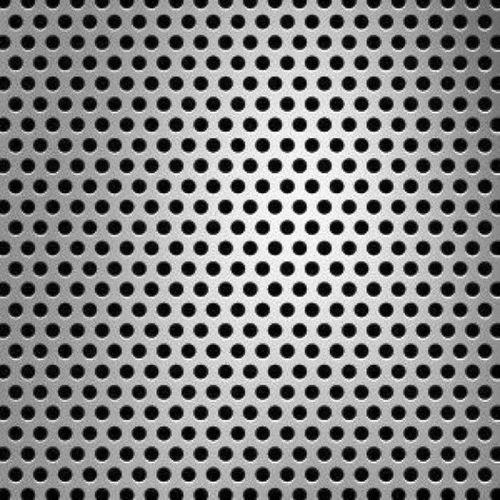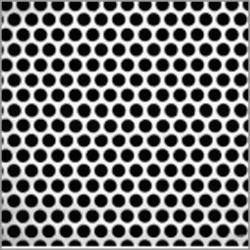Perforated Metal Sheet
Perforated Metal Sheet Specification
- Shape
- Rectangular, Square, Customizable
- Surface Treatment
- Galvanized, Powder Coated, Polished
- Standard
- ASTM, JIS, DIN
- Process
- Cold rolled and punched
- Temper
- Hard, Semi-hard or Soft depending on material
- Material
- Stainless Steel, Mild Steel, Aluminum
- Type
- Perforated Metal Sheet
- Technique
- Perforation with precision punching machines
- Thickness
- 0.5 mm to 5 mm
- Application
- Filtration, architectural panels, ventilation, decorative purposes
- Feature
- High strength, corrosion resistance, uniform perforation
Perforated Metal Sheet Trade Information
- Minimum Order Quantity
- 100 Square Foots
- Supply Ability
- 500 Square Foots Per Day
- Delivery Time
- 1-7 Days
About Perforated Metal Sheet
The offered Perforated Metal Sheet is made available by us for use in the various commercial and industrial applications. The Perforated metal, also known as perforated sheet, perforated plate, or perforated screen, is sheet metal that has been manually or mechanically stamped or punched to create a pattern of holes, slots, or decorative shapes. The Perforated sheet metal is sheet metal in which perforations have been blanked out of the metal. This type of metal is usually composed of carbon steel, stainless steel, or monel metal. It allows for a variety of standard designs, making it easy to use for a number of purposes.
Product specifications
Size of Opening | 6.4343 mm |
Usage/Application | Construction |
Material Grade | SS304 |
Brand | Safety Mesh |
Holes Type | Round |
Technique | Hot Rolled |
Color | Silver |
Material | Stainless Steel |
Size | 8 x 4 feet |
Country of Origin | Made in India |
Wire Diameter | 2.032 mm |
Precision Craftsmanship and Material Choices
Each perforated metal sheet is produced using advanced punching machines that guarantee consistent, uniform hole patterns. Clients can select from stainless steel, mild steel, aluminum, or specify custom materials, with sheet hardness tailored to requirements. This diversity ensures optimal performance for filtration, screening, ventilation, and decorative uses.
Versatile Applications Across Industries
With multiple hole shapes and a selection of finishes such as galvanized or powder-coated surfaces, these perforated sheets are ideal for industrial, architectural, and commercial applications. Their robust construction and high open area make them suitable for use in demanding environments requiring durability, airflow, or decorative appeal.
Compliance and Reliable Packaging
All products conform to international standards including ASTM, JIS, and DIN. Sheets are available with plain or folded edges and are carefully packed according to standard export protocols to ensure safe delivery worldwide for distributors, manufacturers, importers, and end users.
FAQs of Perforated Metal Sheet:
Q: How are perforated metal sheets manufactured with precise hole shapes and patterns?
A: Perforated metal sheets are produced using precision punching machines that ensure consistent hole shapes such as round, square, slot, and hexagonal. The process involves cold rolling and punching the base material, which is selected according to required thickness and hardness, to create uniform perforation patterns as per design specifications.Q: What materials and surface treatments are available for these sheets?
A: Available materials include stainless steel, mild steel, aluminum, or custom alloys. Surface treatments such as galvanization, powder coating, and polishing can be specified, offering enhanced corrosion resistance and tailored appearance for different applications.Q: When should a specific open area or pitch size be chosen?
A: Open area (up to 60%) and pitch size (2 mm to 20 mm) should be selected based on the intended usegreater open areas and wider pitches are suitable for applications like ventilation and filtration, while tighter patterns may be optimal for screening or decorative purposes requiring increased strength or specific aesthetics.Q: Where can these perforated metal sheets be used effectively?
A: These sheets are ideal for screening, separation, ventilation, and filtration in industries such as construction, architecture, HVAC, and manufacturing. They are also popular in decorative panels, facades, and other architectural elements requiring both functional and aesthetic properties.Q: What are the main benefits of using perforated metal sheets?
A: Key benefits include high strength, excellent corrosion resistance, and uniform perforation. Their customizable design allows for optimal airflow, light passage, and visual appeal, making them efficient solutions for industrial, architectural, and decorative requirements.Q: How are these sheets packaged and delivered?
A: Perforated metal sheets are packed using standard export packaging methods to ensure their protection during transit. This careful packaging ensures the sheets arrive at their destination without damage, meeting the needs of distributors, importers, and end users globally.

Price:
- 50
- 100
- 200
- 250
- 500
- 1000+
More Products in Perforated Sheet Category
GI Perforated Sheet
Price Range 40.00 - 400.00 INR / Square Foot
Minimum Order Quantity : 100 Square Foots
Temper : Soft, SemiHard
Process : Punching, Shearing, Bending
Technique : Other, Perforating, Cold Rolled
Standard : IS 277, ASTM A653
SS Perforated Sheet
Price Range 40.00 - 400.00 INR / Square Foot
Minimum Order Quantity : 100 Square Foots
Temper : Soft, Full Hard, Semi Hard
Process : Punching / Perforation
Technique : Other, Cold rolled and perforated
Standard : ASTM, AISI

 Send Inquiry
Send Inquiry


 Call Me Free
Call Me Free
